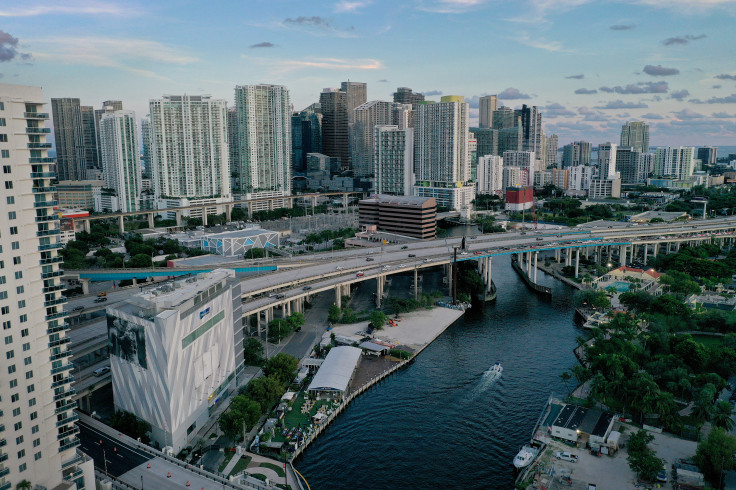
The University of Miami released a groundbreaking study on Friday, revealing that 35 high-rise buildings along the Miami coastline are sinking at "unexpected" rates. The high-rises, home to tens of thousands of residents, include prominent luxury properties such as Trump International, Trump Tower III, Surf Club Towers, and the Porsche Design Tower.
Using satellite technology, the researchers documented vertical displacements of two to eight centimeters between 2016 and 2023, with some buildings showing continuous subsidence. Approximately 70% of new buildings in Sunny Isles Beach, which is known as a hotspot for luxury developments, are affected.
"The discovery of the extent of subsidence hotspots along the South Florida coastline was unexpected," Farzaneh Aziz Zanjani, the study's lead author, said in a press release, emphasizing a "need for ongoing monitoring and a deeper understanding of the long-term implications for these structures."
Researchers linked Miami's fragile coastal geology and construction activities to the buildings' subsidence. The region sits on top of porous limestone interbedded with sandy layers, which were shown to reconfigure due to a collection of factors, including construction vibrations, groundwater pumping, tidal flows, and heavy structural loads.
Notably, the study revealed that "majority of the sinking buildings are new structures built after 2014," suggesting that subsidence is a "consequence of their own construction." The sinking of older structures included in the study was also shown to coincide "with nearby construction activities."

Researchers also analyzed buildings in Surfside, the site of the tragic Champlain Towers collapse in 2021, which resulted in more than 90 deaths. The results showed notable subsidence in the area, but no precursory movements were detected at the Champlain site itself. Although, the results were deemed as "inconclusive because the section of the structure where the collapse initiated can not be imaged from space," the study read.
While the collapse was primarily attributed to poor maintenance and design flaws, the researchers emphasized the need for monitoring "building stability," especially in coastal areas with corrosive environmental conditions.
The scientists pointed out that South Florida high-rises are designed to undergo several tens of centimeters of settlement of the entire structure. However, uneven settlement is of concern, as it could lead to structural damage.
Amid rising insurance costs and growing storm fears impacting Florida's housing market, these findings add another layer of concern for those looking to buy or sell real estate in the state.
According to the New York Post, Florida has enacted new laws mandating costly structural assessments and repairs for condo buildings. These measures have led to a decline in high-risk property prices and triggered an exodus of institutional investors, many of whom are now listing their properties for sale further contributing to the state's rising inventory.
The study also raises critical questions about the sustainability of high-rise construction in coastal areas. Across the country, coastal California similarly faces a long-standing issue with sinking structures, which in some cases have led to the displacement of hundreds of families. The causes there have been linked to a combination of factors, including construction activities, climate change, excessive groundwater pumping, and natural geological processes.
© 2025 Latin Times. All rights reserved. Do not reproduce without permission.





